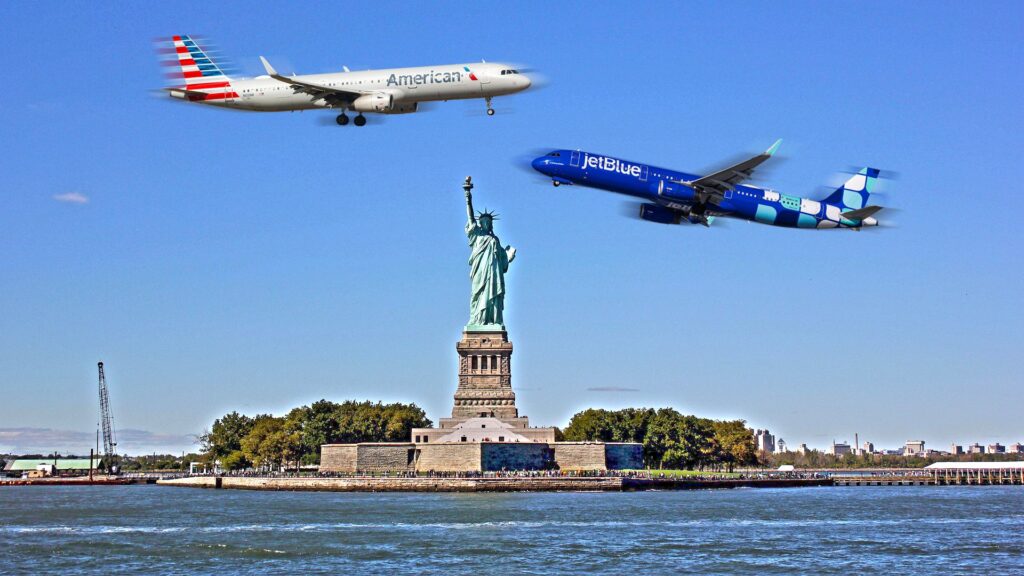
As air travel continues to rebound in 2025, Alaska Airlines has emerged as the dominant carrier in the United States’ transcontinental air market. With a significant increase in demand for coast-to-coast flights, the airline has surpassed competitors in the number of scheduled flights, according to data from Cirium for October 2025. This surge in travel comes as many flyers return to the skies after the disruptions caused by the COVID-19 pandemic.
In October 2025, Alaska Airlines operated 1,470 scheduled flights, more than any other airline. This figure represents a remarkable 30% increase over United Airlines, which ranked second with 1,084 flights. Despite having fewer flights, United Airlines led in overall seat capacity, offering approximately 227,100 seats compared to Alaska’s 206,128 seats. This highlights a competitive landscape among the major airlines operating transcontinental routes.
Flight Numbers and Capacity Analysis
The data indicates that Delta Air Lines follows in third place with 618 flights and a seat capacity of 122,866. American Airlines, JetBlue Airways, Frontier Airlines, and Spirit Airlines round out the rankings, with significantly lower numbers. Here’s a breakdown of the top airlines based on scheduled flights and seat capacity in October 2025:
Carrier: Flights – Seat Capacity
Alaska Airlines: 1,470 – 206,128
United Airlines: 1,084 – 227,100
Delta Air Lines: 618 – 122,866
American Airlines: 547 – 114,354
JetBlue Airways: 434 – 71,948
Frontier Airlines: 112 – 36,544
Spirit Airlines: 90 – 21,742
The data reflects scheduled flights between major hubs on the West and East Coasts, making it a reliable indicator of airline performance. Key airports considered include Los Angeles International Airport (LAX), John F. Kennedy International Airport (JFK), and Miami International Airport (MIA), among others.
Alaska Airlines’ Strategy and Fleet
Alaska Airlines’ impressive performance can be attributed to its streamlined fleet strategy. The airline primarily operates a mix of Boeing 737 Next Generation and 737 MAX aircraft, focusing on efficiency and reliability. In 2025, they expanded their operations by integrating Hawaiian Airlines into their network, further boosting their capacity.
The airline’s busiest routes from Seattle include flights to New York-JFK, Newark, and Boston, with San Francisco and Los Angeles also ranking highly among their most popular destinations. Notably, while Alaska Airlines leads in the number of flights, it falls slightly behind United Airlines in total seat capacity by approximately 10%.
United Airlines, while second in flight frequency, boasts the most extensive fleet of commercial aircraft globally, with nearly 1,100 airliners. Its operations between major hubs, such as San Francisco to Newark, significantly contribute to its competitive edge in terms of passenger capacity.
Delta Air Lines, with its hub at Atlanta Hartsfield-Jackson International Airport, ranks third in transcontinental flights. Its busiest route in October 2025 was from LAX to JFK, with 290 scheduled flights and over 65,000 available seats. Delta’s focus on service quality, including modern lounges and in-flight dining, has reinforced its position in the market despite not having the largest fleet.
Emerging Trends and Future Outlook
While Alaska Airlines, United Airlines, and Delta Air Lines dominate the market, other carriers like JetBlue Airways and American Airlines are also contributing to the competitive landscape. JetBlue’s JFK to LAX route ranks as the third-most-popular flight, with over 300 flights and 47,000 seats available. American Airlines maintains a strong presence, particularly in the premium travel segment, with popular routes and a growing fleet of Boeing 737 MAX jets.
Low-cost carriers such as Frontier and Spirit Airlines face challenges in competing with larger airlines due to limited resources and fewer established routes. Nonetheless, they provide budget-friendly options for travelers seeking affordable flights between major cities.
As the aviation industry continues to recover and adapt to changing travel patterns, Alaska Airlines’ leadership in the transcontinental market showcases the dynamic nature of air travel in the post-pandemic era. With increasing passenger demand and strategic fleet management, the competition among these airlines is likely to intensify in the coming years.






